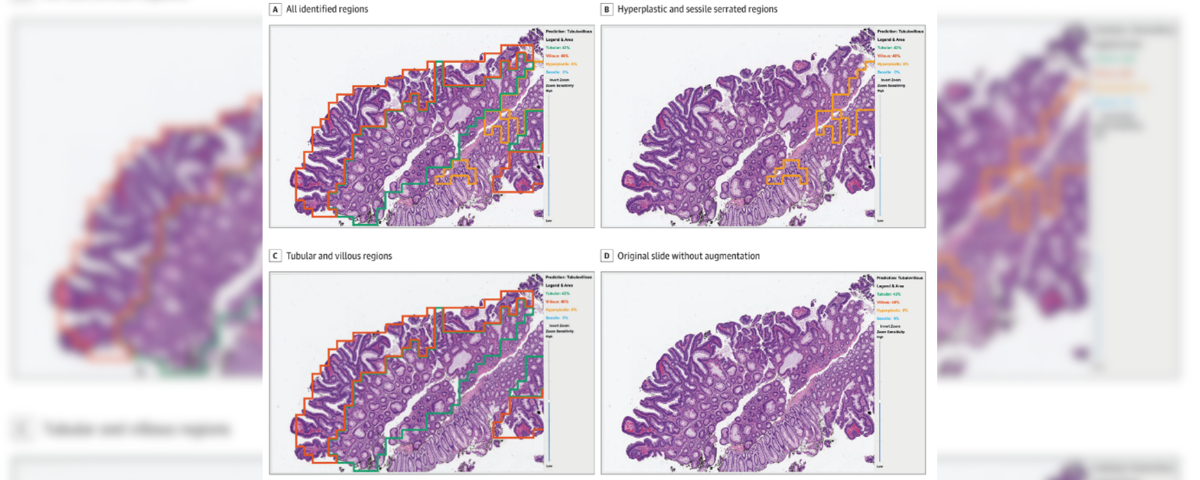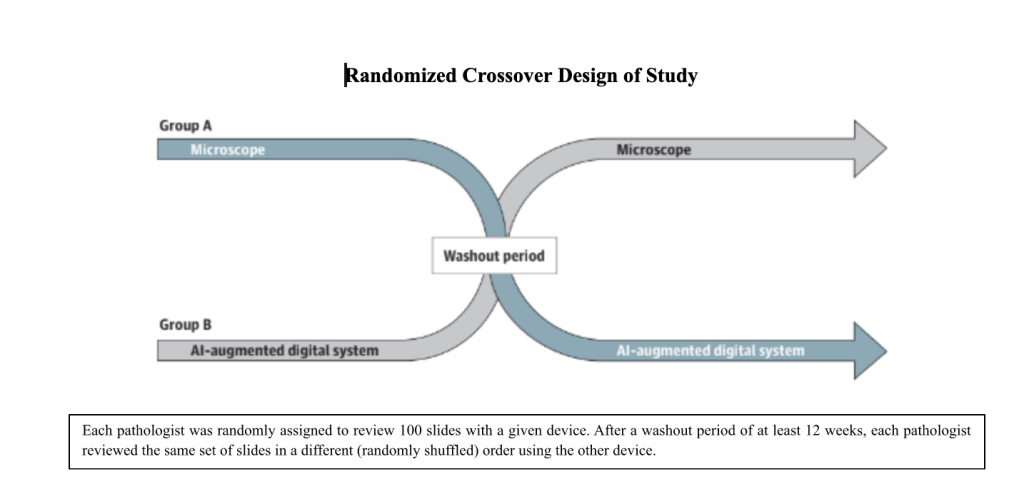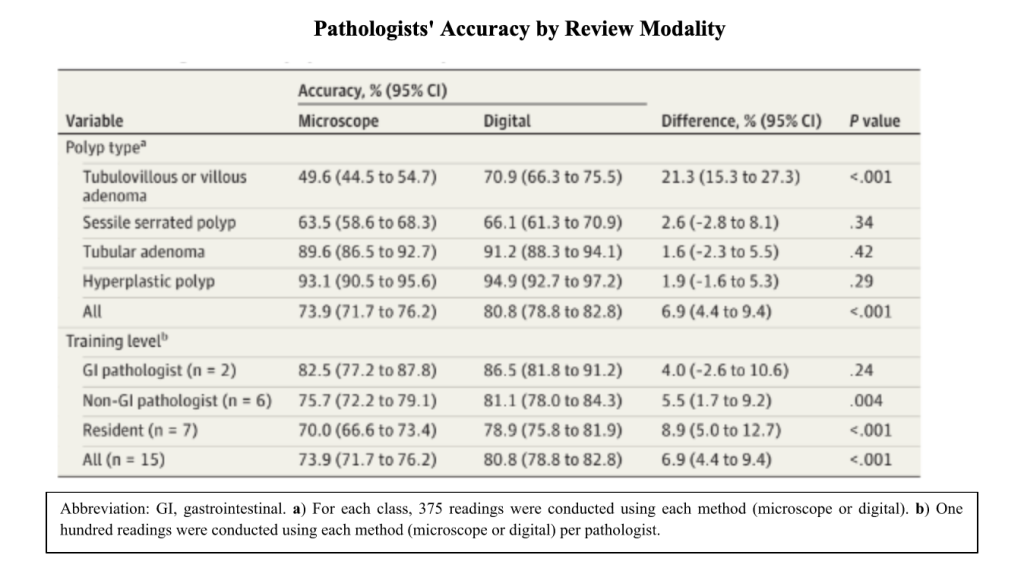
PerClot: A Breakthrough in Surgical Hemostasis
January 31, 2024
Mi Band®
February 29, 2024Article of the Month – February 2024




Colorectal polyps are common, and their histopathologic classification is used in the planning of follow-up surveillance. Substantial variation has been observed in pathologists’ classification of colorectal polyps, and improved assessment by pathologists may be associated with reduced subsequent underuse and overuse of colonoscopy.
In this diagnostic study conducted at a tertiary academic medical center and a community hospital in New Hampshire, 100 slides with colorectal polyp samples were read by 15 pathologists using a microscope and an AI-augmented digital system, with a washout period of at least 12 weeks between use of each modality. The study was conducted from February 10 to July 10, 2020.

Accuracy and time of evaluation were used to compare pathologists’ performance when a microscope was used with their performance when the AI-augmented digital system was used. Outcomes were compared using paired t-tests and mixed-effects models.
In assessments of 100 slides with colorectal polyp specimens, use of the AI-augmented digital system significantly improved pathologists’ classification accuracy compared with microscopic assessment from 73.9% (95% CI, 71.7%-76.2%) to 80.8% (95% CI, 78.8%-82.8%) (P < .001). The overall difference in the evaluation time per slide between the digital system (mean, 21.7 seconds; 95% CI, 20.8-22.7 seconds) and microscopic examination (mean, 13.0 seconds; 95% CI, 12.4-13.5 seconds) was –8.8 seconds (95% CI, –9.8 to –7.7 seconds), but this difference decreased as pathologists became more familiar and experienced with the digital system; the difference between the time of evaluation on the last set of 20 slides for all pathologists when using the microscope and the digital system was 4.8 seconds (95% CI, 3.0-6.5 seconds).
In this diagnostic study, an AI-augmented digital system significantly improved the accuracy of pathologic interpretation of colorectal polyps compared with microscopic assessment. If applied broadly to clinical practice, this tool may be associated with decreases in subsequent overuse and underuse of colonoscopy and thus with improved patient outcomes and reduced health care costs.

According to the United States Food and Drug Administration (USFDA) agency, the colonoscopy is the gold standard screening test for colorectal cancer and surveillance of precancerous polyps. Because the classification of each polyp depends on the pathologist’s expertise, an AI-augmented digital system was created to help classify the four most common types. The results of this study determined that the pathologist using the AI algorithm was more accurate than the pathologist working with the microscope alone. Even though the algorithm only included four different types of polyps, if we increase the software data or develop an AI algorithm for each type of cancer, we can significantly decrease the mortality rate of each one. In the case of a benign lesion, the algorithm will reduce follow-up and unnecessary procedures. In the case of pre-malignant lesions, it will determine the right time for a follow-up appointment or surgical procedures, if necessary. Simultaneously, patient care is improved as it decreases the risk of complications of misdiagnosis or unnecessary procedures. Hence, this advancement represents a time-saving and cost-effective enhancement for patients and the healthcare system.